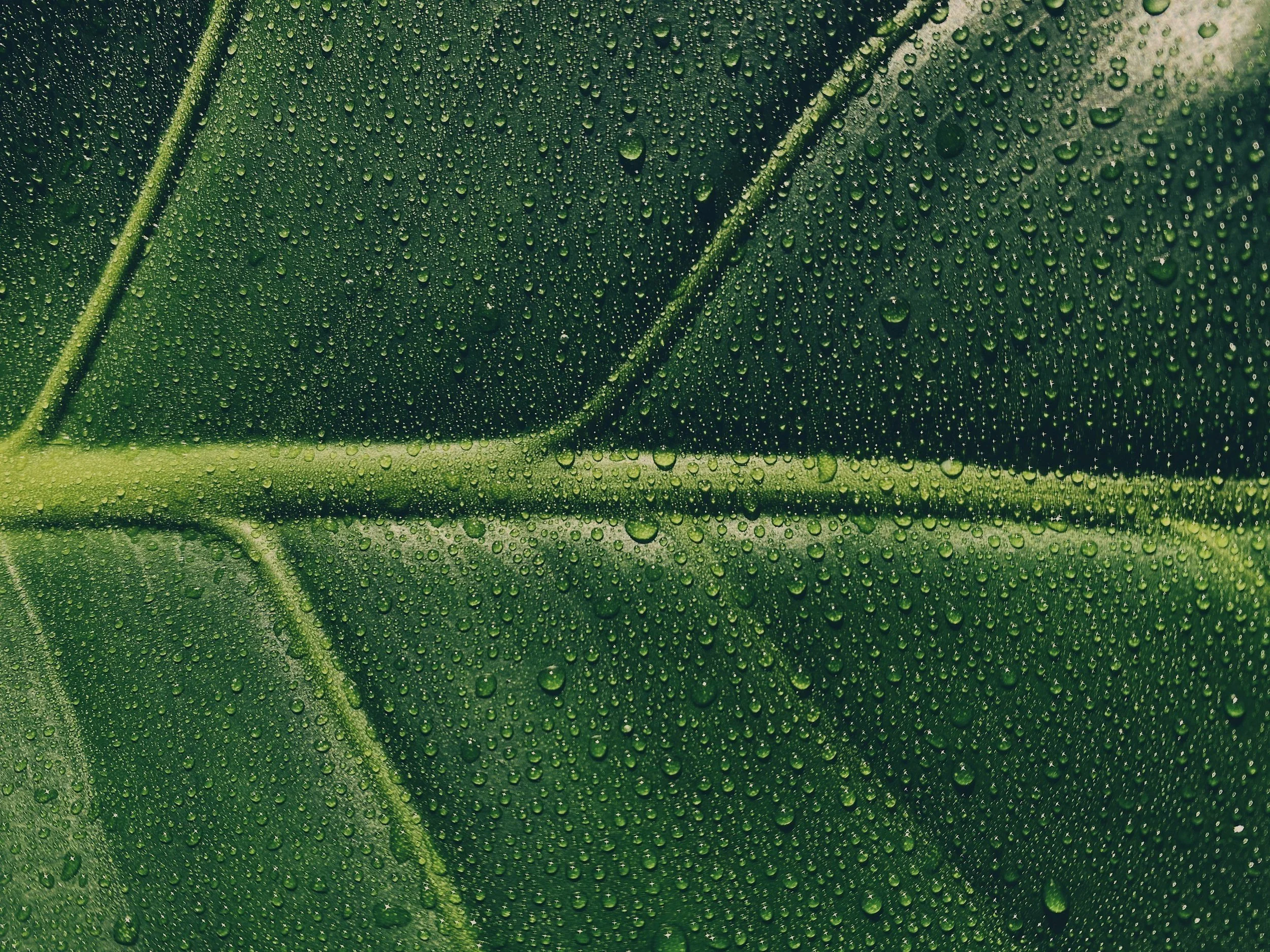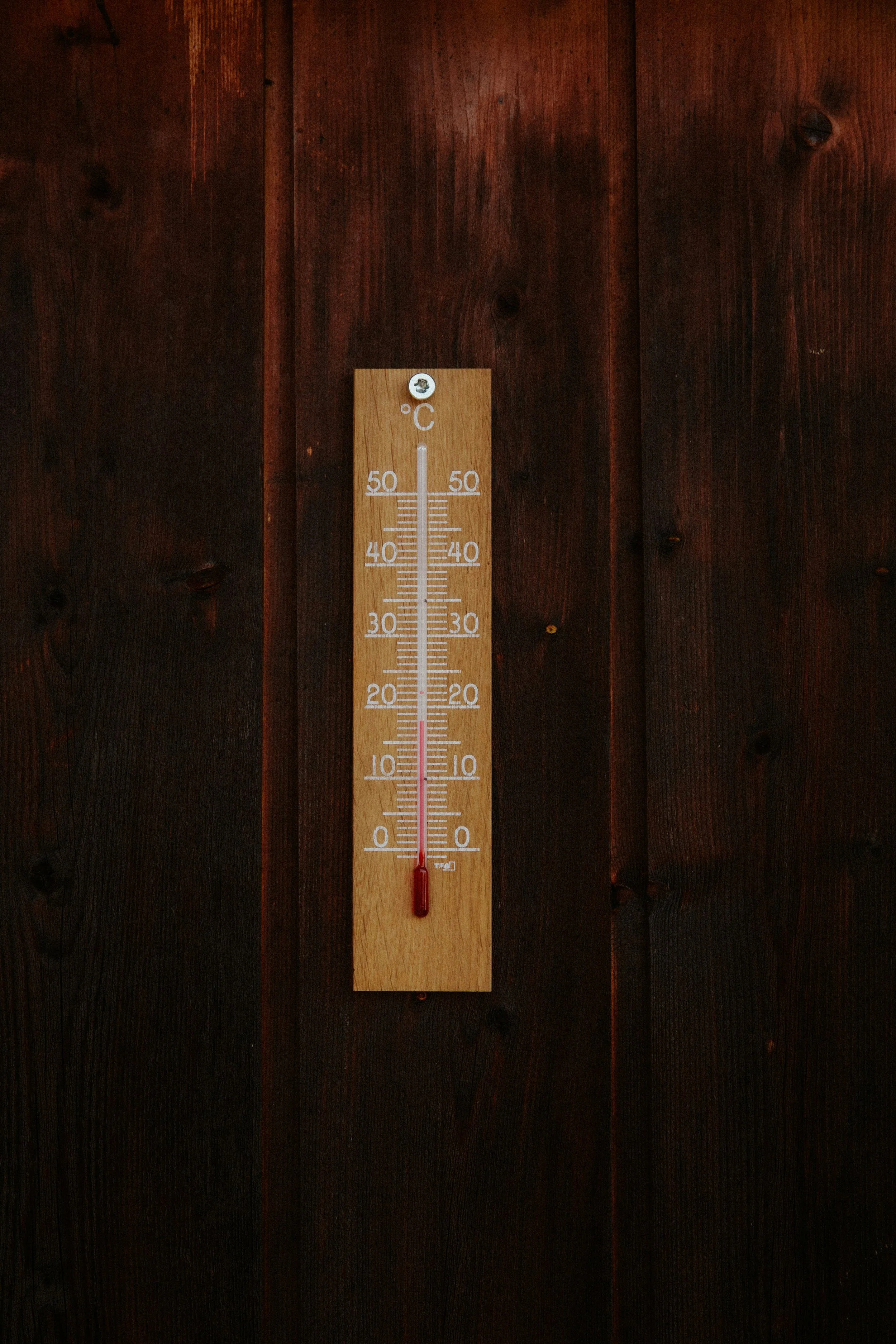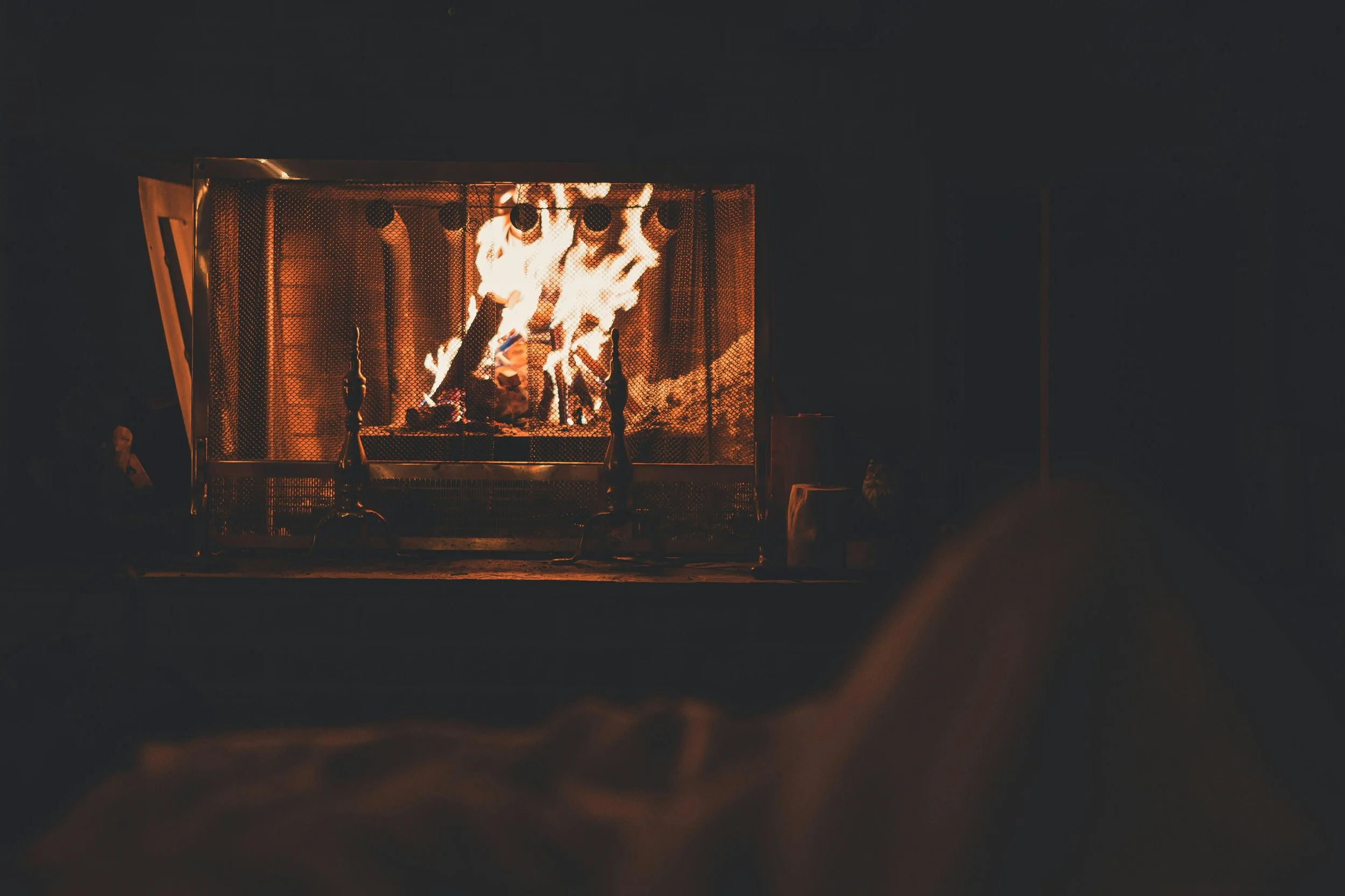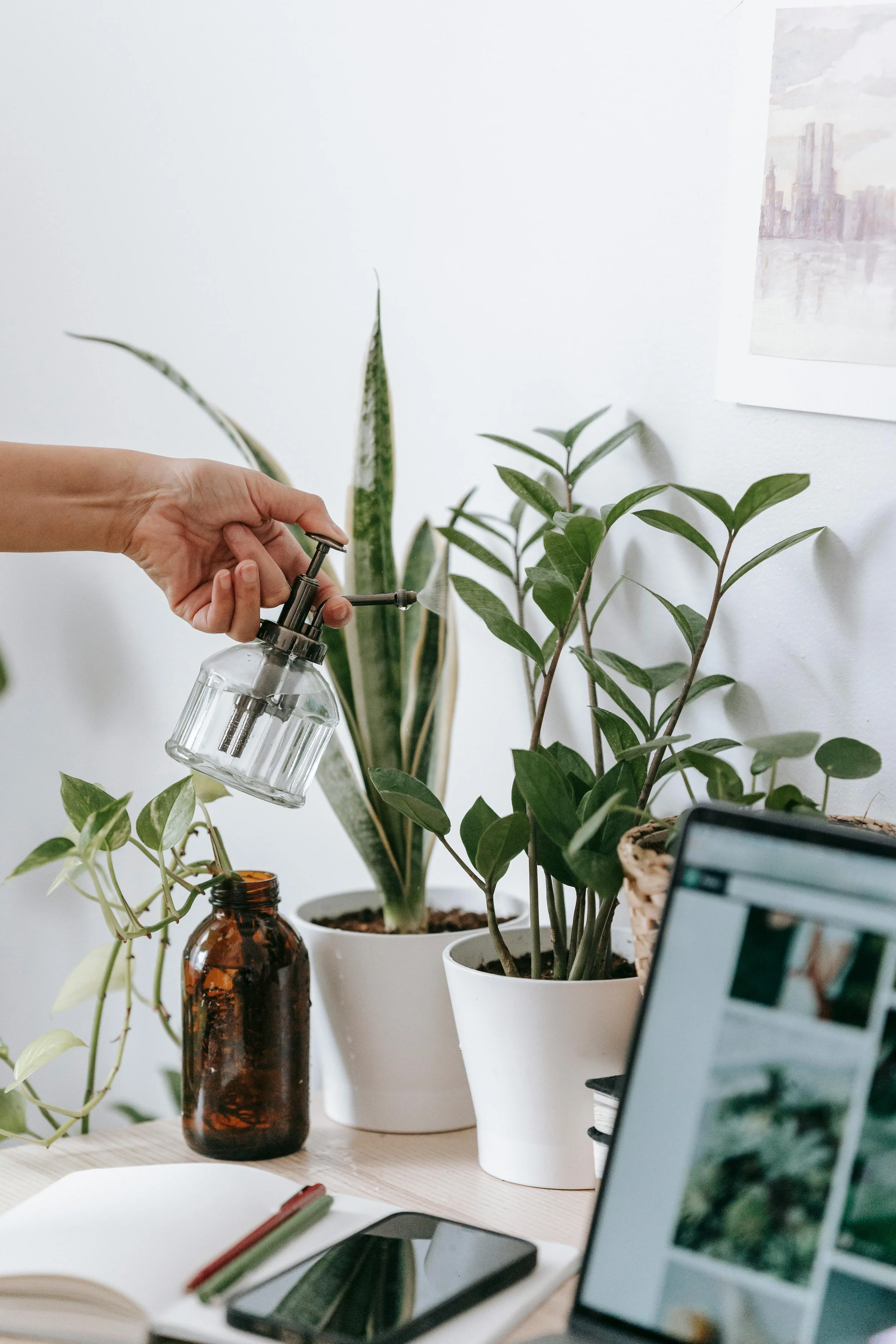
Temperature
& Humidty
Temperature and Humidity are relatively simple concepts, but are often have the most misconceptions.
On this page, we will discuss our plants preferences and how to achieve them in your home!
___________________________
Temperature & Humidity
Temperature
___________________________
Temperature is the easiest plant requirement to achieve as it can be easily monitored and doesn’t take much to change.
Houseplants do well in temperatures from 65 - 80 degrees Fahrenheit, though their ideal range is 70 - 75 degrees.
This should be easy to achieve since most of our homes are naturally kept with in this range. But if you find some of your houseplant areas are getting cooler than this (especially at night), you may want to consider a space heater in order for your plants to thrive.
Note: A heater is a must if you plan on dedicating a specific room to your plants or are maintaining plants for a business. Especially during the winter as night temperatures can dip well below a plant’s happy place.
Extreme Temps
___________________________
Though 65 - 80 degree temperatures are a houseplants happy place, they can withstand temperatures ranging from 50 - 90 degrees Fahrenheit. They will not thrive in these extreme ends, and their growth will be stunted, but they can survive.
Anything above 90 can scorch your plants and anything below 50 will induce frost damage.
One of the blessings here in Idaho is that we rarely get above 90 degrees for very long. So, usually we do not have to worry about those extremes. Just make sure you plants stay out of the direct heat by placing them in the shade if you choose to take them outside.
We do, however, definitely get temperatures below 50. Cold temperatures are the most harsh on our tropical plants. This means that any exposure to cold temperatures for longer than a quick walk to the car can cause severe freeze damage to your plants.
I used to work for a plant shop on a college campus and we unfortunately saw many students making the 5 minute trek home to their apartment with plants in tow in the middle of January! Then they would return and say their plant died right after bringing it home.
It does not take long for a plant to freeze, so please be careful with your plants as you transport them through the winter.
Remember, their ideal temperature is the same as yours. If you need a jacket, they need a jacket. If you need a coat (heavy duty) they also need a coat.
Note: You must also consider these cold temperatures when doing the following:
Leaving plants in the Car
Placing a plant in a Window
Opening your Windows to let in the Draft
If these places or activities are too cold, they can also harm your plants.
Winter Heating
___________________________
Another downfall of our harsh winter months is when we turn on our heaters.
Not only does this decrease the humidity in our homes, but the intense heat next to these sources can be devastating to plants.
Do not place a plant directly in front of or near a heater. They will burn your plants instantly!
I have seen leaves go from their beautiful green to completely black in seconds. It is actually quite shocking how fast it can happen.
Please be careful where you place your plants in the winter months!
___________________________
Humidity
Humidity is the hardest plant requirement to achieve in our area because our natural environment is really dry. We are in a desert after all!
However, houseplants often do just fine in the humidity of an average home (30 - 40%), and many plants will still thrive in these less humid conditions.
Still, the ideal humidity for most tropical plants if you want them to really thrive is 50 - 70%. But some plants require humidity to be as high as 80 - 100%, which is really hard to achieve in a regular home, and it can be dangerous as it may introduce toxins such as Black Mold.
In the following sections I will discuss some of the ways to increase the humidity around your home.
Simple Methods
___________________________
There are some simple ways to increase the humidity around your home, but you may need a lot of them in order to be effective. I will list them here in order of most to least effective.
Plant Groupings: Most Effective
Plants naturally release water into the air as they transpire. When you group plants together, they, in a sense, help boost each other’s humidity.
I have lots of plants grouped together in a single room down in my basement (around 100 plants) and every time you walk in you can smell the extra humidity in room! It is one of my favorite experiences as I care for my plants each day!
2. Vases & Trays: Moderately Effective
Leaving out Vases or Trays full of water with you plants can also increase the humidity. As the water evaporates, the moisture content in the air increases.
You do however, need a lot of them for this to be effective. And you need to change out the water frequently to prevent it from growing Algae or Mold.
3. Misting: Least Effective
Misting is often the most recommended way to increase humidity for you plants, but it is also the least effective.
Misting can keep your plant leaves moist and temporarily increase the humidity in the air. However, that increase does not last long. Unless you have automatic misters, you would have to be misting your plants every 30 minutes to an Hour in order for it to even be a tiny bit effective. To me, that just isn’t worth it.
Note: Leaving your bathroom door open when you shower can also increase the humidity temporarily. But it is not very effective, as the increase does not last long.
___________________________
Moderate Methods
The two moderate methods to increase your humidity require a bit more work or money, but are more effective than your simple methods. They are Humidifiers & Terrariums.
Humidifiers:
Humidifiers can be used to increase the humidity of a specific room. They often have built in controls where you can set a certain humidity and it will automatically maintain it. These are a wonderful way to keep a constant humidity in an area.
However, they do need to be refilled often depending on how high of humidity they are maintaining and how big your space is. And they need to be cleaned from time to time to keep them running smoothly.
It is best to refill your humidifier with distilled or purified water as that will keep extra mineral build up out of your filter. You do not have to do this, but if you don’t, you will have to clean your humidifier more often.
Terrariums
___________________________
Terrariums are another great way to increase humidity around your plants. Placing plants in an enclosed, but clear container (so light can still pass through) creates a mini water cycle and keeps the humidity at 80-100% inside.
The downfalls of Terrariums are their size (limited by the container chosen) and complexity.
It is important to note that their miniature water cycle can create some problems if not done properly, making the Terrarium stay too moist and leading to rot. The best wat to avoid these issues is with proper layering. It is best to start with a couple inches of drainage layer (usually gravel, rock, LECA, or some other sturdy but porous material). From there, it is important to build layers that contain the ideal growing mediums for the plants you choose to put in them.
Though they are not the easiest, when done properly they can be a nice addition to your collection.
___________________________
Complex Methods
The two complex methods to increase your humidity require a lot more work and money, but are more the most effective ways to increase the humidity in your homes. They are Custom Grow Cabinets & Greenhouses.
Grow Cabinets
This method is the more common of the complex methods.
This involves purchasing a display cabinet and retrofitting it to regulate its own temperature and humidity or building one from the ground up. Essentially, these are bigger and more customizable versions of the terrariums mentioned above. These also follow the same principles of layering as terrariums but are at less risk of rot due to the larger area and ability to incorporate automated systems and mechanical controls.
These are very nice additions to your home because they allow more customizable control for your plants on a larger scale than Terrariums, but still blend in with the rest of your home decor.
The downside to these is once again size. Though they are bigger than Terrariums, they still have a limited size and can only support so many plants at a time.
Greenhouses
___________________________
The most effective, but also most complex way to maintain higher humidity is to have a dedicated and enclosed grow space where you can install bigger automated systems and mechanical controls.
These require the most money, need a lot of planning, and can only be done in specifically designed spaces.
But, they are virtually limitless in size and give your plants a true space of their own! They are specifically tuned to the environment you want and will maintain that for you (if you automate them). For humidity purposes, some automated systems that can be incorporated are Automatic Misters or Automated Humidifier Systems (larger than the ones mentioned above).
These will make sure the humidity around your plants stays perfectly in the range you would like.
There is a lot of customizability in these installations. The larger the greenhouse and the more advanced the temperature and humidity control systems, the more expensive they will be.
But they result in beautiful spaces where you and your plants can relax and enjoy life. And to me, that is well worth it!
For more Basic Tips
Head back to my General Care Page!










